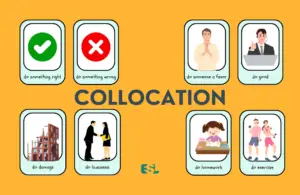In our ever-evolving digital age, the world of technology and digital communication is rapidly expanding and transforming. With this progress comes an influx of new terminology and phrases, vital to understanding and navigating this growing field.
Whether you are a digital native, a professional in the tech industry, or simply a curious learner, a comprehensive understanding of these words is crucial. This article aims to provide an insightful compilation of essential vocabulary related to technology and digital communication.
Table of Contents
- 1. Basic Computer and Internet Terminology
- 2. Social Media Vocabulary
- 3. Software and Programming Vocabulary
- 4. E-commerce Vocabulary
- 5. Cybersecurity Vocabulary
- Sample Conversation: Using Vocabulary for Technology and Digital Communication
- Conclusion
- FAQ: Vocabulary for Technology and Digital Communication
1. Basic Computer and Internet Terminology
We’ll begin with some fundamental words associated with computers and the internet, the primary platforms for digital communication.
| Word/Phrase | Meaning/Usage | Example Sentences |
|---|---|---|
| Browser | Software used to access and view websites | “Google Chrome and Mozilla Firefox are popular web browsers.” |
| URL (Uniform Resource Locator) | The address of a web page | “Please enter the URL of the website in the browser.” |
| Download | To copy data from a remote system to a local system | “I downloaded the new software update for my computer.” |
| Upload | To transfer data from a local system to a remote system | “I uploaded my pictures to the cloud for safekeeping.” |
| Firewall | A network security system that monitors and controls incoming and outgoing network traffic | “The firewall protects your computer from harmful viruses and hackers.” |
| IP Address (Internet Protocol Address) | A unique string of numbers and/or letters that identifies a computer using the Internet Protocol to communicate over a network | “Every device connected to the internet has a unique IP address.” |
| Spam | Irrelevant or unsolicited messages sent over the internet, typically to large numbers of users | “My email inbox is full of spam.” |
| Bandwidth | The maximum rate of data transfer across a given path | “Streaming high-definition videos requires a lot of bandwidth.” |
| Cookie | A small amount of data generated by a website and saved by your web browser | “Cookies are used to remember information about the user for future visits.” |
| Cache | A hardware or software component that stores data so future requests for that data can be served faster | “Clearing your browser cache can help speed up your browsing speed.” |
| Server | A computer or system that provides resources, data, services, or programs to other computers, known as clients, over a network | “The website is down because the server is under maintenance.” |
| Encryption | The method by which information is converted into secret code that hides the information’s true meaning | “Encryption is crucial for maintaining the security of your online data.” |
If you are searching for an effective English language vocabulary builder, try Word Power Made Easy: The Complete Handbook for Building a Superior Vocabulary (Amazon Link). This time-tested classic has helped millions achieve mastery of English and improve their communication skills in business, the classroom, and in life.
2. Social Media Vocabulary
Social media has become a cornerstone of digital communication. Let’s delve into some key vocabulary for navigating this sphere.
| Word/Phrase | Meaning/Usage | Example Sentences |
|---|---|---|
| Hashtag | A word or phrase preceded by a hash sign (#), used on social media websites and applications to identify messages on a specific topic | “#ThrowbackThursday is a popular hashtag on Instagram.” |
| Feed | The constantly updating list of stories in the user’s network | “I love scrolling through my Instagram feed to see what my friends are up to.” |
| Viral | An image, video, or link that spreads rapidly through a population by being frequently shared with numerous individuals | “The video went viral and has been viewed by millions of people worldwide.” |
| Meme | An image, video, piece of text, etc., typically humorous in nature, that is copied and spread rapidly by internet users | “The latest meme is spreading rapidly across social media.” |
| Troll | A person who starts quarrels or upsets people on the internet to distract and sow discord by posting inflammatory and digressive, extraneous, or off-topic messages | “Don’t feed the trolls; they’re just looking for attention.” |
| DM (Direct Message) | A private form of communication between social media users | “She sent me a DM with the details of the meeting.” |
| Follow | To subscribe to the updates of a particular user on social media | “You can follow us on Facebook for more updates.” |
| Like | An indication of approval or agreement with a social media post or update | “If you enjoy the content, please like and share it.” |
| Retweet | To share someone else’s post on Twitter, so your own followers can see it | “He retweeted the news article to his followers.” |
| Influencer | A social media user who can influence others due to their popularity or credibility on the platform | “The influencer partnered with the brand for their latest product launch.” |
| Emoji | A small digital image or icon used to express an idea or emotion in electronic communication | “She used the heart emoji in her message.” |
3. Software and Programming Vocabulary
As the building blocks of technology, software and programming have their own set of key terminology.
| Word/Phrase | Meaning/Usage | Example Sentences |
|---|---|---|
| Algorithm | A process or set of rules to be followed in calculations or other problem-solving operations, especially by a computer | “Google’s search algorithm determines the order of the search results.” |
| Bug | An error in a computer program or system that causes it to produce an incorrect or unexpected result, or to behave in unintended ways | “The software update is meant to fix a bug that was causing the app to crash.” |
| Code | The language that programmers create and use to tell a computer what to do | “She’s learning to code in Python.” |
| Database | A structured set of data | “The customer database contains important information about our clients.” |
| Open Source | A type of software whose source code is available for modification or enhancement by anyone | “Linux is a popular open-source operating system.” |
| API (Application Programming Interface) | A set of rules that allow programs to talk to each other | “The API allows third-party developers to create apps that interact with the platform.” |
| GUI (Graphical User Interface) | A type of user interface that allows users to interact with electronic devices through graphical icons and visual indicators | “The GUI makes it easier for non-technical users to interact with the software.” |
| Backend | The part of a software application that runs behind the scenes and is not visible to the user | “The backend of the application handles data processing and storage.” |
| Frontend | The part of a software application that the user interacts with | “The frontend developer is responsible for creating the user interface.” |
| HTML (HyperText Markup Language) | The standard language for creating webpages and web applications | “HTML is a fundamental technology used in web development.” |
| SDK (Software Development Kit) | A collection of software tools and programs used by developers to create applications for specific platforms | “The Android SDK provides everything you need to start developing apps.” |
4. E-commerce Vocabulary
E-commerce is a significant facet of the digital world. Here are some important terms related to this industry.
| Word/Phrase | Meaning/Usage | Example Sentences |
|---|---|---|
| Cart | A virtual area for collecting items to purchase on an e-commerce website | “I added the shoes to my cart but haven’t checked out yet.” |
| Checkout | The process of purchasing items from an online retailer | “During checkout, you’ll need to provide your shipping information.” |
| Digital Wallet | A system that securely stores users’ payment information and passwords for numerous payment methods and websites | “You can use a digital wallet like PayPal to streamline online purchases.” |
| E-commerce (Electronic Commerce) | The buying and selling of goods and services, or the transmitting of funds or data, over an electronic network, primarily the internet | “E-commerce has revolutionized the way we shop.” |
| Dropshipping | A supply chain management method in which the retailer does not keep goods in stock but instead transfers customer orders and shipment details to either the manufacturer, another retailer, or a wholesaler | “She started a dropshipping business selling jewelry online.” |
| Fulfillment | The process of receiving, packaging, and shipping orders for goods | “The company has a warehouse dedicated to order fulfillment.” |
| Inventory | The quantity of goods that a firm has on hand | “We need to do an inventory check to make sure we have enough stock.” |
| Mobile Commerce (m-commerce) | The buying and selling of goods and services through wireless handheld devices | “Mobile commerce is on the rise as more people shop on their phones.” |
| Online Marketplace | A type of e-commerce site where product or service information is provided by multiple third parties | “Amazon is the world’s largest online marketplace.” |
| SKU (Stock Keeping Unit) | A unique identifier for each distinct product and service that can be purchased | “Each color and size of the t-shirt has a different SKU.” |
5. Cybersecurity Vocabulary
In our connected world, cybersecurity has become a critical concern. Here are some key terms in this area.
| Word/Phrase | Meaning/Usage | Example Sentences |
|---|---|---|
| Malware | Software that is specifically designed to disrupt, damage, or gain unauthorized access to a computer system | “Your computer has been infected with malware.” |
| Phishing | A method of trying to gather personal information using deceptive e-mails and websites | “The email was a phishing attempt to get my login credentials.” |
| Ransomware | A type of malicious software designed to block access to a computer system until a sum of money is paid | “The company’s files were held hostage by ransomware.” |
| VPN (Virtual Private Network) | A private network that is established over the internet | “Using a VPN can help protect your privacy online.” |
| Two-Factor Authentication | A method of confirming users’ claimed identities by using a combination of two different factors | “For added security, enable two-factor authentication on your accounts.” |
| Firewall | A part of a computer system or network that is designed to block unauthorized access | “A firewall can help protect your computer from hackers.” |
| Encryption | The process of converting information or data into a code to prevent unauthorized access | “Encryption is a key component of internet security.” |
| Botnet | A network of private computers infected with malicious software and controlled as a group without the owners’ knowledge | “Botnets can be used to carry out distributed denial-of-service attacks.” |
| Spyware | Software that enables a user to obtain covert information about another’s computer activities by transmitting data covertly from their hard drive | “Spyware can be used to steal sensitive information.” |
| HTTPS (Hyper Text Transfer Protocol Secure) | An extension of the Hypertext Transfer Protocol for secure communication over a computer network | “Always look for the HTTPS in the URL when entering sensitive information online.” |
To improve your vocabulary in just 30 days, I recommend to my students an informative, fun, and accessible guide to utilizing powerful language. Millions of individuals have enhanced their academics, job skills, and confidence by dedicating just fifteen minutes daily to the exercises and tests of 30 Days to a More Powerful Vocabulary (Amazon Link), a top-selling. It offers step-by-step methods to bolster language prowess, discover compelling words, and daily vocabulary enhancement with pronunciation guidance.
Sample Conversation: Using Vocabulary for Technology and Digital Communication
Situation: At a tech startup’s open workspace, Chris and Jamie are brainstorming about integrating new technologies into their current platform.
Chris: Hey Jamie, I’ve been delving into some emerging technologies that could enhance our platform’s user experience. Have you heard about “augmented reality” interfaces?
Jamie: Absolutely, Chris. AR could be a game-changer for us, especially in terms of user engagement. We could also consider leveraging “machine learning” to personalize content for our users.
Chris: That’s a stellar idea! By utilizing “predictive analytics,” we could anticipate user needs and provide tailored recommendations. It could significantly boost our platform’s retention rates.
Jamie: Definitely. On the topic of digital communication, we should also think about “chatbots.” They can provide real-time assistance and streamline our customer support.
Chris: True. Integrating a “cloud-based” infrastructure might also be beneficial. It’d ensure data synchronization across devices and improve the overall accessibility of our platform.
Jamie: Agreed. Keeping up with the latest tech trends is paramount. Let’s set up a “webinar” next week to discuss these ideas with the rest of the team and get their insights.
Conclusion
As the digital world continues to grow and evolve, so too does the language we use to describe it. Keeping up-to-date with technology and digital communication vocabulary can help you understand and navigate this dynamic sphere more effectively. Whether it’s the basics of computer and internet terminology, the lingo of social media, or the jargon of e-commerce, each term is a piece of the puzzle that makes up our digital landscape. The importance of cybersecurity, especially, cannot be overstated in our increasingly connected world.
This article serves as a glossary, a guide, and a resource for familiarizing yourself with crucial vocabulary in technology and digital communication. However, as this field advances at an unprecedented rate, so will its associated language. Staying informed and continuously learning is key to maintaining digital literacy in our tech-savvy society.
FAQ: Vocabulary for Technology and Digital Communication
1. What is “augmented reality” (AR)?
Augmented reality, often abbreviated as AR, is a technology that overlays digital information, like images or videos, onto the real world through devices like smartphones or AR glasses. It enhances the user’s perception of reality by integrating virtual elements into their environment.
2. How does “machine learning” differ from traditional programming?
Machine learning is a subset of artificial intelligence where systems learn from data and make decisions without being explicitly programmed. Unlike traditional programming, where explicit rules are defined, machine learning algorithms adjust and improve their performance as they process more data.
3. What are “predictive analytics”?
Predictive analytics involves using data, statistical algorithms, and machine learning techniques to identify future outcomes based on historical data. It provides insights into what might happen in the future, allowing businesses to make informed decisions.
4. How do “chatbots” enhance digital communication?
Chatbots are artificial intelligence-driven software applications designed to simulate human conversation. They can interact with users in real-time, answering queries, providing information, or facilitating tasks, enhancing user experience and providing efficient customer support.
5. Why is “cloud-based” infrastructure becoming popular?
Cloud-based infrastructure refers to storing and accessing data and programs over the internet instead of on a local computer or server. It offers benefits like scalability, cost-effectiveness, and the ability to access data from anywhere with an internet connection, making it a preferred choice for many businesses.
6. What is a “webinar”?
A webinar is a seminar or workshop conducted over the internet. It allows participants from various locations to join in, view presentations, interact with the host, and even participate in discussions or polls, making it a versatile tool for sharing knowledge and information.
7. How is “user engagement” measured in digital platforms?
User engagement refers to how actively users interact with a digital platform or content. It can be measured using various metrics like session duration, page views, likes, shares, comments, and other interactive actions users take while on the platform.
8. Why is “data synchronization” important?
Data synchronization ensures that datasets in different locations are updated and consistent with each other. In digital platforms, it ensures that users get the same data and experience irrespective of the device or location they access the platform from.
9. What are the benefits of “personalized content”?
Personalized content tailors the user experience based on individual preferences, behaviors, and needs. It increases relevancy, enhances user engagement, and often leads to higher conversion rates as users find the content more relatable and actionable.
10. How does technology influence “digital communication”?
Technology plays a pivotal role in shaping digital communication. Advancements like faster internet speeds, mobile devices, and innovative software solutions have made communication more instant, interactive, and accessible, bridging gaps and fostering global connections.






